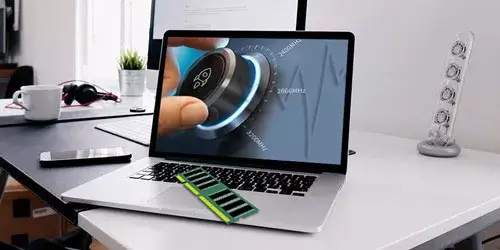Is RAM Usage High? 12 Ways to Free up RAM in Windows 10/8/7
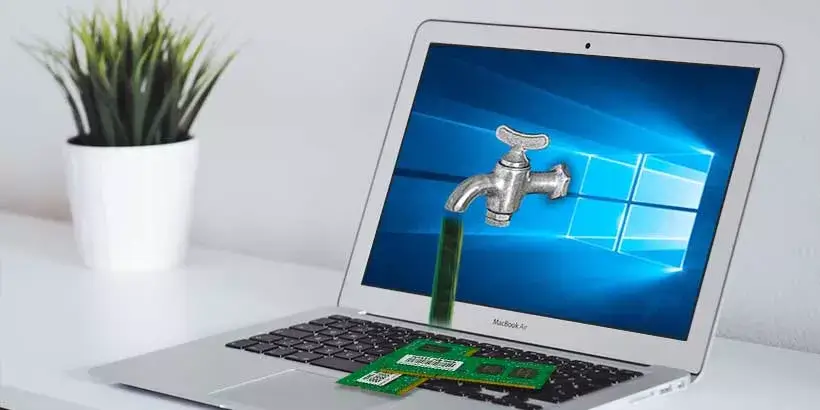
It sometimes occurs that the RAM usage is so high in Windows, even up to 100% RAM usage, which causes your computer to slow down. In this post, we will share with you 12 of the most effective ways to free up RAM in Windows 10/8/7 to reduce RAM usage.
- Way 1: Disable startup programs
- Way 2: Disable running bloatware
- Way 3: Restart Windows Explorer
- Way 4: Disable useless services
- Way 5: Close apps running background
- Way 6: Disable browser tabs
- Way 7: Remove browser extensions
- Way 8: Adjust virtual memory
- Way 9: Clear Page File
- Way 10: Turn off visual effects
- Way 11: Restart computer
- Way 12: Add more physical memory
- Bottom Line
Way 1: Disable startup programs
Some programs can run automatically when the computer starts up. Sometimes they are useless and you don't even realize that these running programs are eating up your RAM. To disable startup programs to reduce RAM usage, you can follow the steps below.
Step 1: Press Shift + Ctrl + Esc simultaneously to open Task Manager window.
Step 2: If the window shows in a simplified summary mode, click More details to see more advanced tools.
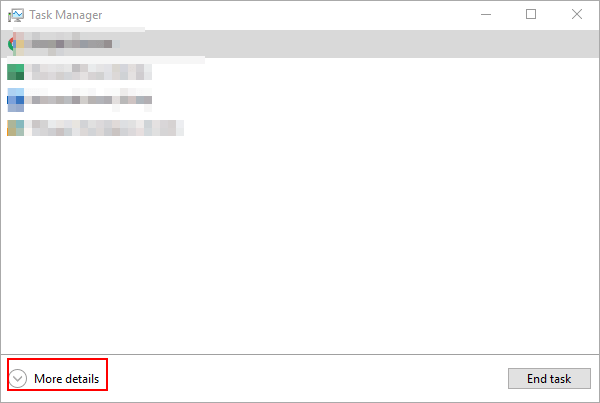
Step 3: On Startup tab, right-click the programs that you don't want to autorun at startup and then select Disable.
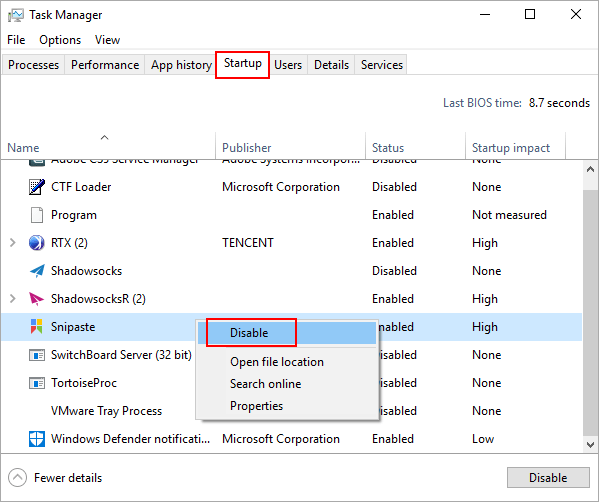
Way 2: Disable running bloatware
Sometimes, the reason why your RAM usage is too high (even up to 100% RAM usage) is that you run too many programs at the same time. Especially, some running bloatware can take up a large amount of RAM resulting in high RAM usage. Here is how to disable the running programs to clear RAM.
Step 1: Press Shift + Ctrl + Esc simultaneously to open Task Manager window.
Step 2: Then click Processes tab and here you can check the running programs.
Step 3: Finally, right-click the programs that you want to close and select End task option.
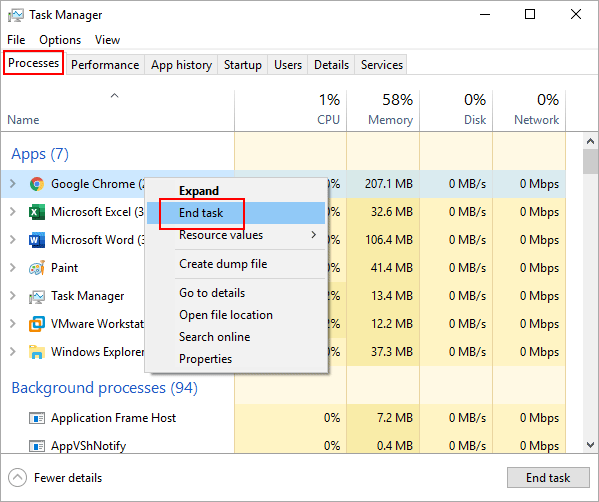
Way 3: Restart Windows Explorer
Windows Explorer is a detail that's easy to overlook. You may open many File Explorer windows unconsciously, which will be one of the reasons of high RAM usage. You can follow the steps of Way 2 to restart Windows Explorer to close all the windows. On the Processes tab of Task Manager window, right-click Windows Explorer and select Restart option.
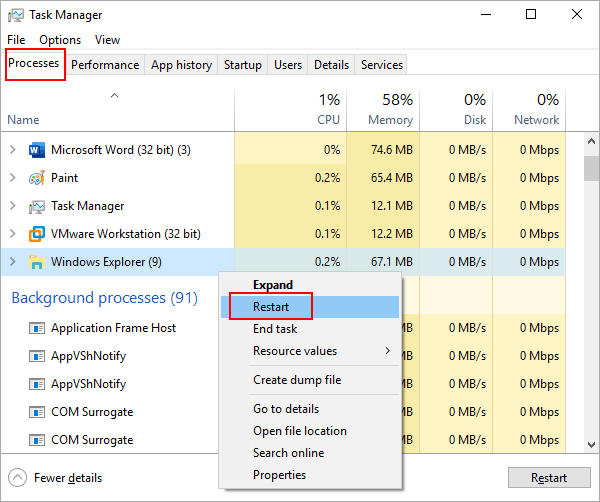
Way 4: Disable useless services
Some useless services running at background will also eat up your RAM and it is time to disable them. However, some services are not recommended to be disabled because they will affect the operation of Windows. So, which services can be disabled? Here we recommend a Windows system optimizer tool named System Genius, which offers you a professional suggestion to enable or disable various system services. Here is the guide.
Step 1: Download System Genius and install it on your computer.
Step 2: Launch it and select System Service option in the left panel. Then all the services are shown in the right panel.
Step 3: According to the suggestions, you can click Disable button to disable a service (Tips: On the Suggest tab, you can disable the services with Suggest Opening, Suggest Disabling, and Keep Current tabs but the services with Must open can't be disabled.).
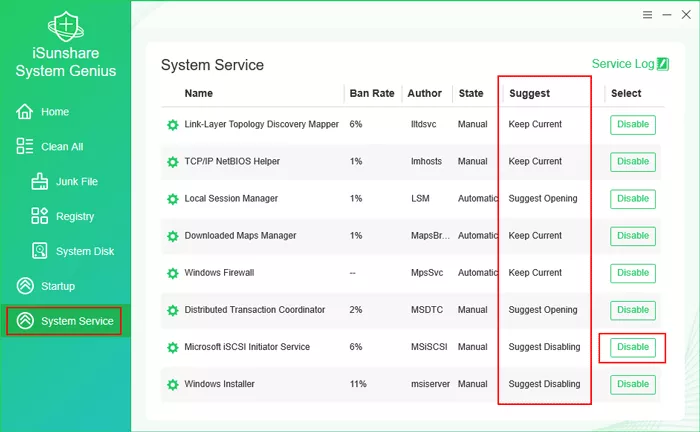
NOTES: In the end, all the operations are recorded in Service Log and you just need one click to restore the original state of services.
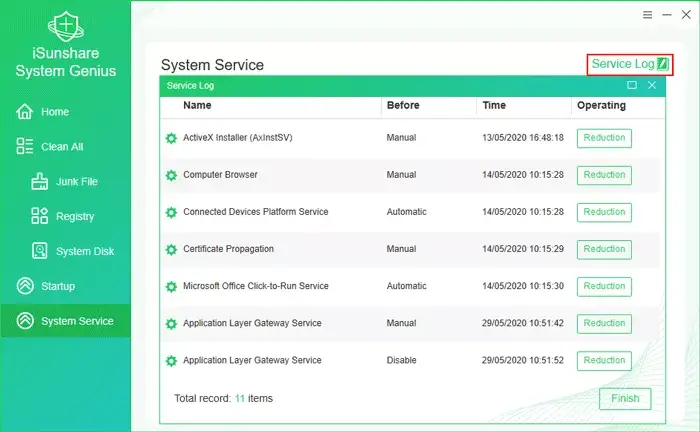
Way 5: Close apps running background (Only for Windows 10)
On Windows 10, a number of apps are running in the background so that they can receive info, send notifications and stay up-to-date, even you're not using them. To clear RAM in Windows 10, you can follow the steps below to close them.
Steps: Press Windows key + I shortcut -> select Privacy option -> select Background apps option -> Toggle the slider to set all the apps off.
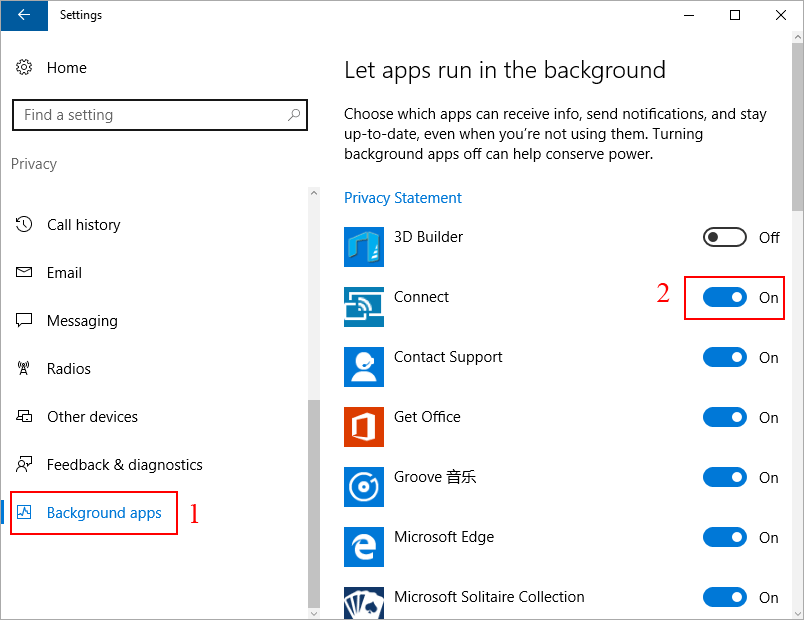
Way 6: Disable browser tabs
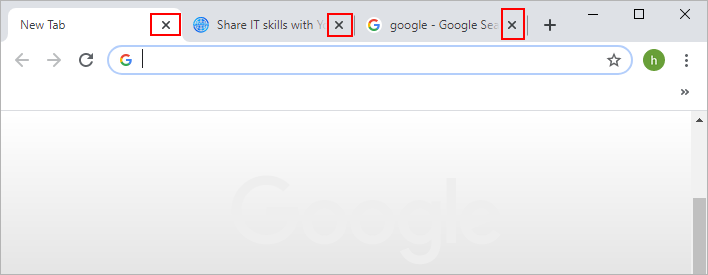
On the Task Manager window, you may have noticed a fact that your browser usually eats up lots of memory, which is caused by the tab page single process design of browser. Every tab of browser is stored in RAM so that you can access it easily and quickly. So, too many tabs on browser may cause too high RAM usage and you can choose to close the unnecessary tabs to clean up RAM of your computer.
Way 7: Remove browser extensions
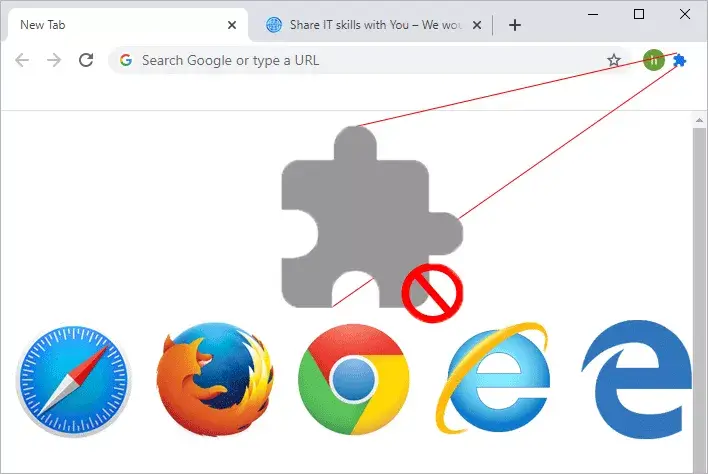
Besides, extensions in browser are also one of factors resulting in high RAM usage. They can offer additional features to improve our browsing experience. However, they also eat up lots of memory. If you don't need to use extensions, you can remove or disable them to clear RAM in Windows.
Way 8: Adjust virtual memory
Virtual memory (Pagefile) is a reserved portion of hard disk that used as an extension RAM when it runs out of physical memory. You can increase the size of virtual memory to reduce high RAM usage. Here are the detailed steps.
Step 1: Open Control Panel window and navigate to System -> Advanced system settings -> Advanced tab -> Settings button in Performance section -> Advanced tab -> Change.
Step 2: Uncheck the Automatically manage paging file size for all drives option.
Step 3: Click Custom size radio button and set the Initial size and Maximum size to higher values (It is recommended that you set virtual memory to be 1.5-3 times the amount of RAM on your computer.).
Step 4: Click Set button and then click OK button to save the change.
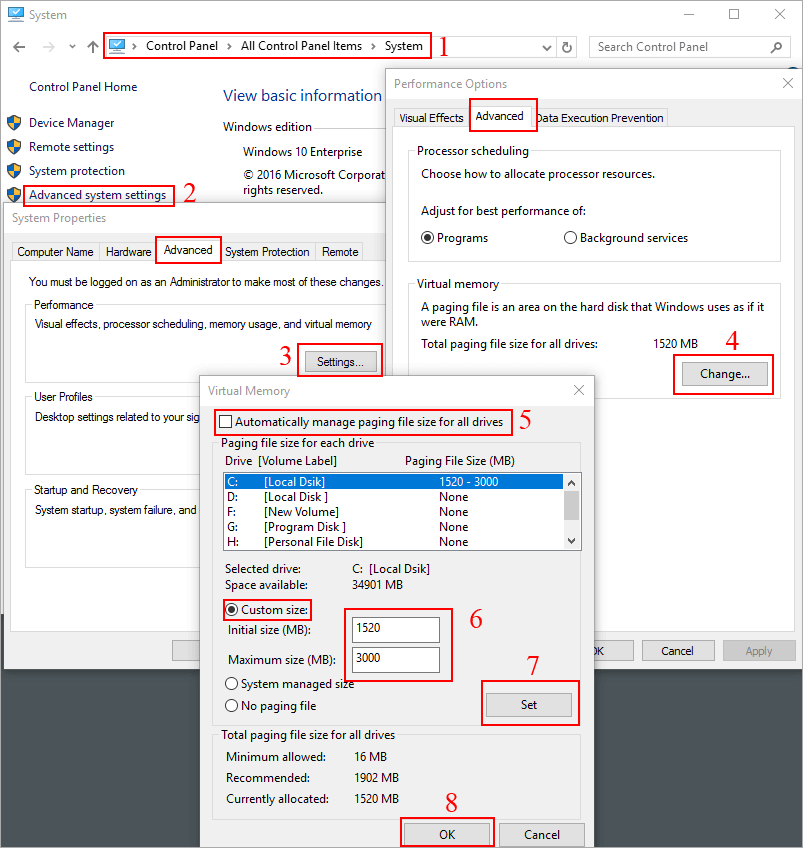
Way 9: Clear Page File
As mentioned above, page file is an extension RAM when computer runs out of physical memory. When your computer is shut down, the RAM will be cleared absolutely but the page file won't, which will affect its efficiency. So, it will be helpful to release Page File. You can clear Page File by following below steps:
Step 1: Open the Registry Editor window. Press the Windows Logo key + R and then type regedit and press Enter.
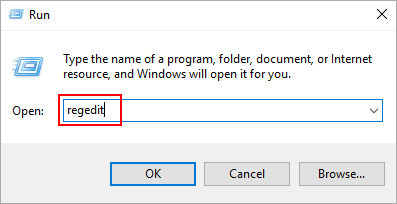
Step 2: Navigate in the left panel to the following path:
Computer\HKEY_LOCAL_MACHINE\SYSTEM\CurrentControlSet\Control\Session Manager\Memory ManagementStep 3: Double-click ClearPageFileAtShutdown on the right panel.
Step 4: Set Value data to 1 and click OK to save the change.
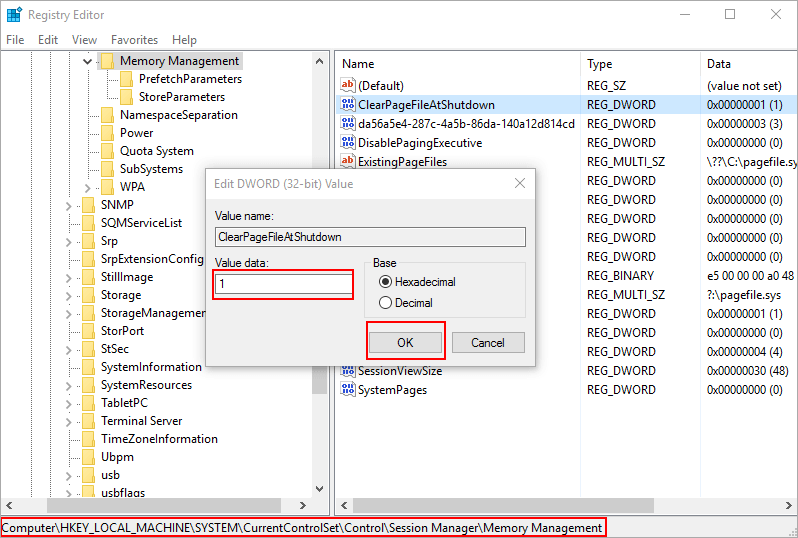
Way 10: Turn off visual effects
Windows operating system offers many options to adjust the appearance and performance of Windows. Better performance of Windows system needs to take up more RAM space. To free up RAM in Windows 10/8/7, you can turn off visual effects and adjust it for best performance. Here are the detailed steps.
Step 1: Open Control Panel window and navigate to System -> Advanced system settings -> Advanced tab -> Settings button in Performance section.
Step 2: On Visual Effects tab, select the radio button of Adjust for best performance and click OK to save the change.
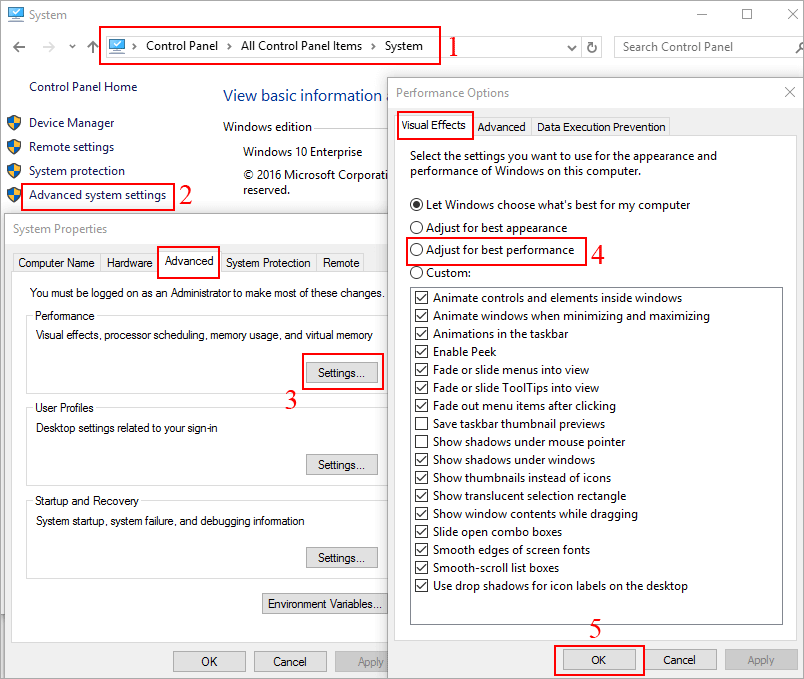
Way 11: Restart computer
If you have tried all the above ways but they fail to reduce high RAM usage, the ultimate way to free up your RAM is to restart your pc. It can clear all the data on your computer's memory and reset all the running programs. For more thoroughness, you can shut down your pc directly and then boot it up later.
Way 12: Add more physical memory
Even if you have restarted your pc but the RAM usage is still too high, it shows that the amount of your RAM is not enough and you need to add more physical memory to upgrade your computer's hardware. Generally speaking, RAM of 8-16GB is sufficient for mainstream computer. For heavy usage, you may need RAM of 16GB or more. You can refer to this article to choose a right RAM for your computer.
Bottom Line
As you can see, it is so straightforward to free up RAM in Windows 10/8/7. Additionally, you can also use some third-party utilities to clear your RAM directly. Ultimately, if the effect is not so dramatic after you have tried all the methods above, it's time to upgrade your computer hardware.





